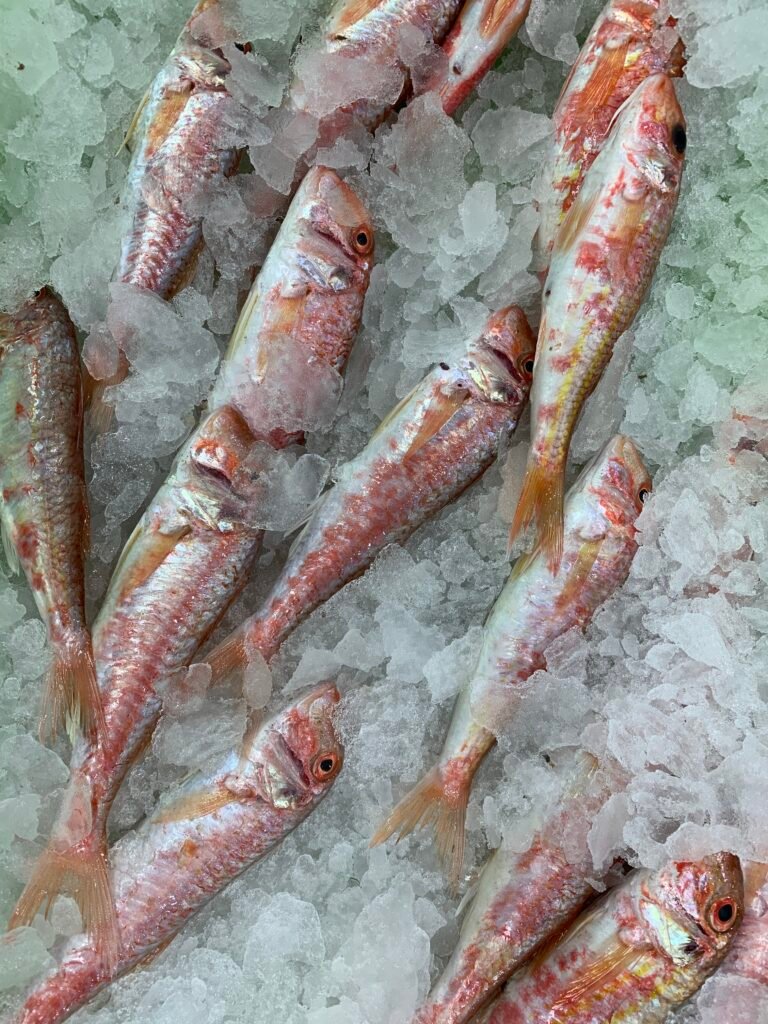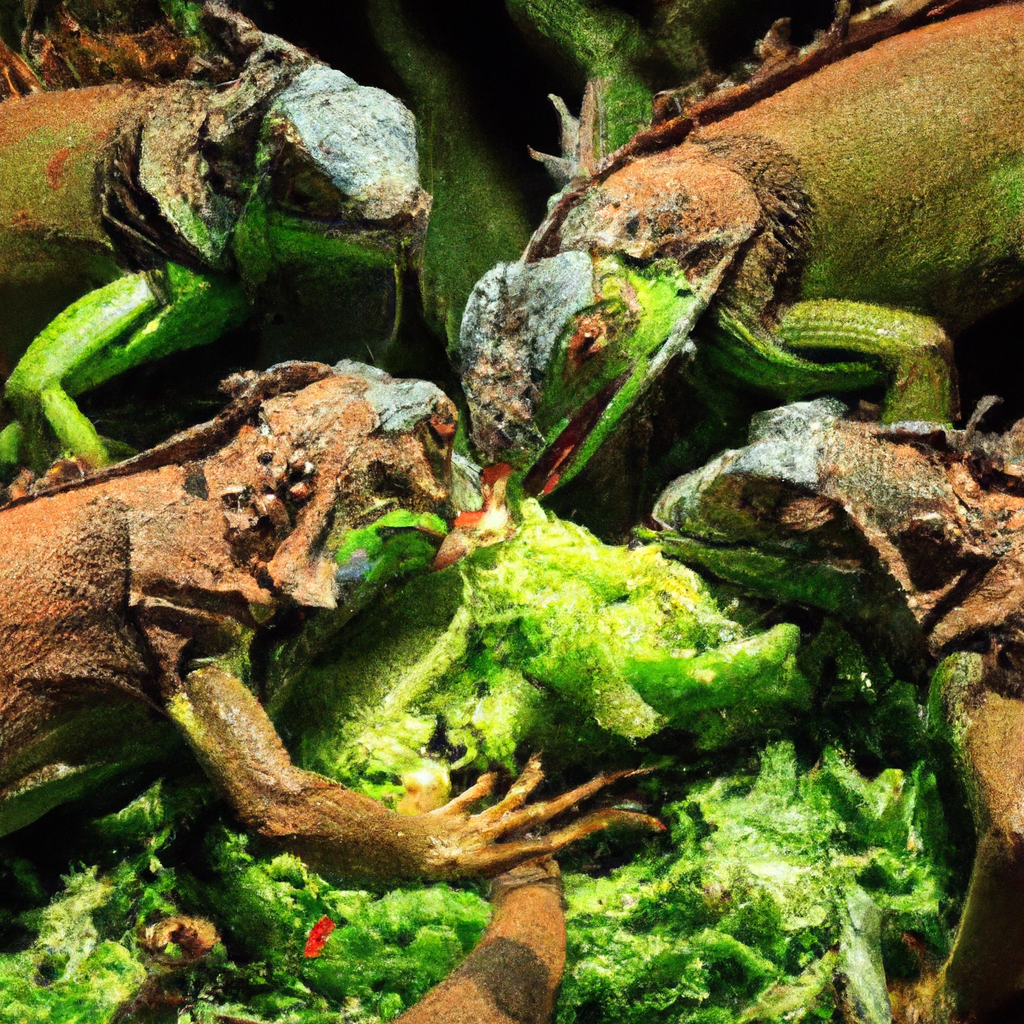Are you looking to provide the best diet for your reptile? Look no further. In this article, we’ll explore the essential aspects of feeding reptiles and guide you on how to create a balanced and nutritious diet for your scaly companion. From understanding their natural feeding habits to choosing the right types of food, we’ve got you covered. So, let’s dive into the world of reptile nutrition and ensure your cold-blooded friend stays healthy and happy.
Understanding Reptile Diets
Carnivorous, Herbivorous, and Omnivorous Reptiles
reptiles have diverse dietary needs, with some being carnivorous, herbivorous, or omnivorous. Carnivorous reptiles, such as snakes and many lizards, primarily consume other animals as their source of nutrition. Herbivorous reptiles, like tortoises and iguanas, primarily eat plants and vegetation. Omnivorous reptiles, such as certain turtle species, have a balanced diet that includes both plants and animals.
Varied Diets Across Different Reptile Species
It’s important to note that the specific dietary requirements of reptiles can vary greatly across different species. Each reptile species has evolved to thrive on certain types of food, which can include various animals, plants, fruits, and even specific insects. Understanding the natural diet of a particular reptile species is crucial in providing the appropriate nutrition for their health and well-being.
Role of Diet in Reptile Health and Growth
Proper nutrition is essential for the overall health and growth of reptiles. A well-balanced diet provides reptiles with the necessary energy, vitamins, minerals, and other nutrients they need to thrive. It plays a crucial role in their immune system function, growth and development, maintenance of optimal body condition, and prevention of diseases and health issues. By understanding and meeting their dietary needs, reptile owners can ensure their pets lead happy and healthy lives.
The Importance of Proper Nutrition
Impact of Nutrition on Reptile’s Immune System
A reptile’s immune system is highly influenced by its diet. Providing adequate nutrition helps strengthen their immune system, making them more resistant to diseases and infections. Essential nutrients, such as vitamins A, C, and E, along with zinc and selenium, play a key role in maintaining a reptile’s immune health. When reptiles are properly nourished, their immune system functions optimally, enhancing their ability to fend off illness.
Proper Growth and Development
Proper nutrition is crucial during a reptile’s growth and development stages. Young reptiles require a diet that is rich in proteins, calcium, and other essential nutrients to support their rapid growth. By ensuring that they receive balanced nutrition during their early stages of life, reptiles can develop strong bones, muscles, and organs. A deficiency or imbalance in their diet during this critical period could result in stunted growth or other health issues.
Maintenance of Optimal Body Condition
Providing reptiles with the right balance of nutrients helps maintain their body condition and overall health. Overfeeding or underfeeding can lead to obesity or malnutrition, respectively, both of which can be detrimental to a reptile’s well-being. A diet tailored to their species, age, and activity level ensures that they receive the necessary nutrients without excess, keeping them at an ideal weight and body condition.
Prevention of Diseases and Health Issues
A proper diet plays a crucial role in preventing illnesses and health issues that can affect reptiles. Inadequate nutrition can lead to metabolic bone disease, a condition caused by a deficiency or imbalance of calcium and phosphorus. Malnourished reptiles may also suffer from skin and shell problems, weakened immune systems, and gastrointestinal disorders. Providing a well-balanced diet that meets their specific needs helps prevent these issues and promotes overall health.

Factors to Consider When Planning a Reptile’s Diet
Species-specific Dietary Requirements
When planning a reptile’s diet, it is crucial to consider their species-specific dietary requirements. Different reptiles have evolved to thrive on specific types of food, and providing a diet that closely mimics their natural diet is essential for their well-being. Researching and understanding the natural feeding habits of your reptile species is vital in ensuring they receive the appropriate nutrition.
Age and Life Stage
The nutritional requirements of reptiles can vary depending on their age and life stage. Hatchlings and juveniles have different needs than adult reptiles. Young reptiles need a higher intake of proteins and essential nutrients to support their growth, while adult reptiles may require a different balance of nutrients to maintain their health. Adjusting the diet as reptiles age is necessary to meet their changing nutritional needs.
Activity Level and Metabolism
The activity level of a reptile, along with its metabolism, can also influence its dietary needs. Some reptiles, such as highly active snakes or monitor lizards, may require more frequent feedings and a higher caloric intake. Reptiles with slower metabolisms, like certain tortoise species, may have lower energy requirements and a diet that focuses more on fibrous plant material. Understanding the activity level and metabolism of your reptile is important for tailoring their diet accordingly.
Natural Habitat and Feeding Behavior
Another important factor to consider when planning a reptile’s diet is their natural habitat and feeding behavior. Reptiles that are adapted to specific environments may have specialized dietary requirements. For example, desert-dwelling reptiles may have evolved to obtain water from their prey and require less supplemental hydration. Understanding the natural foraging and feeding behaviors of your reptile can help you provide a more enriched and appropriate diet.
Avoiding Malnutrition and Obesity
One of the key considerations when planning a reptile’s diet is avoiding both malnutrition and obesity. Providing a diet that meets all of their nutritional requirements, including essential vitamins and minerals, is crucial for preventing malnutrition. On the other hand, overfeeding can lead to obesity, which can have detrimental effects on a reptile’s health. Striking the right balance and closely monitoring their food intake is essential for their overall well-being.
Possible Pitfalls in Reptile Diets
Inadequate Calcium and Vitamin D3
A common pitfall in reptile diets is an inadequate intake of calcium and vitamin D3. Calcium is crucial for proper bone growth and muscle function, while vitamin D3 aids in the absorption of calcium. Without adequate levels of both, reptiles can develop metabolic bone disease, which can lead to deformities, fractures, and other skeletal issues. Providing calcium-rich foods, along with proper UVB lighting for vitamin D3 synthesis, is essential in preventing this deficiency.
Improper Calcium to Phosphorus Ratio
Another pitfall in reptile diets relates to the calcium to phosphorus ratio. Reptiles require a higher ratio of calcium to phosphorus for proper bone health. A calcium to phosphorus ratio of 2:1 or higher is generally recommended. Many feeder insects, such as crickets and mealworms, have a higher phosphorus content than calcium. feeding reptiles primarily with these insects, without proper calcium supplementation, can lead to an imbalance and subsequent health issues.
Overfeeding or Underfeeding
Finding the right balance in feeding reptiles is crucial, as both overfeeding and underfeeding can have negative consequences. Overfeeding can lead to obesity, which increases the risk of various health problems, including metabolic disorders. Underfeeding, on the other hand, can result in malnutrition and stunted growth. Monitoring your reptile’s body condition and adjusting their food intake accordingly helps ensure proper nutrition without excess or deficiency.
Lack of Dietary Variety
Providing a varied diet is essential for reptile health. Offering a consistent and diverse range of appropriate foods helps ensure that reptiles receive a wide array of essential nutrients. Relying on a single food item or type can lead to nutritional deficiencies or imbalances. By including a variety of insects, fruits, vegetables, and other appropriate food items, you can provide a more enriched diet for your reptile.
Feeding Live Prey
Feeding live prey can present risks for reptiles. Prey animals may injure or transmit diseases to the reptile during the feeding process. Live prey can also cause stress or injury to the reptile if not consumed promptly. When feeding live prey, close monitoring is necessary to ensure the reptile’s safety. Alternatives, such as pre-killed or frozen-thawed prey, can provide the necessary nutrition without the risks associated with live feeding.

Basic Nutritional Needs of Reptiles
Macronutrients: Proteins, Carbohydrates, and Fats
Reptiles require macronutrients in their diets to meet their energy needs. Proteins are vital for growth, tissue repair, and muscle development. Insect-eating reptiles rely more heavily on protein as their energy source. Carbohydrates provide energy, while fats are a concentrated source of energy, particularly for reptiles that hibernate or undergo periods of fasting. Balancing the intake of macronutrients ensures proper energy utilization and overall health.
Micronutrients: Vitamins and Minerals
Reptiles also require essential micronutrients, such as vitamins and minerals, for various bodily functions. Vitamins play critical roles in metabolic processes, immune function, and overall health. Vitamin D3, in particular, is crucial for calcium absorption and bone health. Minerals, such as calcium, phosphorus, and potassium, are necessary for proper bone formation, muscle function, and fluid balance. Providing a diverse diet with sources of both vitamins and minerals is key to meeting these requirements.
Water Requirements
Proper hydration is essential for reptiles, as it supports various physiological functions, including digestion, thermoregulation, and waste elimination. Reptiles obtain water through their diet and from external sources, such as licking water droplets or soaking. Some reptiles, like aquatic turtles, have higher water requirements, while others, like desert-dwelling reptiles, have adapted to obtain water mainly from their prey. Providing clean, accessible water is crucial for maintaining proper hydration.
Different Types of Reptile Diets
Carnivorous Reptiles
Carnivorous reptiles have a diet primarily composed of other animals. Snakes, for example, feed on a variety of prey items, such as rodents, birds, amphibians, and reptiles. Lizards like monitors and skinks also have a carnivorous diet. Feeding carnivorous reptiles a variety of appropriately-sized prey items is essential in providing them with the necessary proteins, fats, and other nutrients they need to thrive.
Herbivorous Reptiles
Herbivorous reptiles primarily consume plant material, such as leaves, flowers, fruits, and vegetables. Tortoises, iguanas, and some turtle species have a herbivorous diet. Providing a varied and balanced selection of plant matter is crucial in meeting the nutritional requirements of herbivorous reptiles. Leafy greens, vegetables, and safe fruits comprise the bulk of their diet, along with appropriate calcium and vitamin supplements.
Omnivorous Reptiles
Omnivorous reptiles have a diverse diet that includes both plant matter and animal protein. Some turtle species, such as red-eared sliders and painted turtles, fall into this category. These reptiles require a balanced diet that includes plant-based food items, such as leafy greens and vegetables, along with appropriate amounts of protein sources, such as insects, fish, or other small animals. Providing a varied diet that meets their omnivorous needs is essential for proper nutrition.
Specialized Diets for Specific Species
Certain reptiles may have specialized dietary requirements due to specific adaptations or health conditions. For example, some reptiles may require a specialized diet to meet their high calcium needs, such as those prone to metabolic bone disease. Others may have specific dietary restrictions due to medical conditions or allergies. Consulting with a reptile veterinarian or a herpetologist familiar with your reptile’s species can help tailor a specialized diet to meet their unique needs.

Feeding Frequency for Reptiles
Frequency Varies Across Different Reptile Species
The feeding frequency for reptiles can vary depending on their species, age, and dietary needs. Young reptiles generally require more frequent feedings to support their growth, while adults may have a different feeding schedule. Species such as snakes and larger lizards may have a less frequent feeding schedule, while small geckos or insectivorous lizards may require daily feedings. Researching the specific needs of your reptile species is crucial in determining the appropriate feeding frequency.
Determining Appropriate Feeding Schedule
Observing your reptile’s behavior and appetite can help determine an appropriate feeding schedule. Many reptiles display feeding cues, such as increased activity or searching for food, signaling that they are hungry. Monitoring their body condition and adjusting the feeding schedule accordingly is important to prevent overfeeding or underfeeding.
Rule of Thumb for Feeding Frequency
As a general rule of thumb, most reptiles will benefit from regular feedings. Young reptiles may require daily or every other day feedings to support their growth. Adult reptiles usually do well with a feeding schedule that ranges from several times a week to once every few weeks, depending on their species and size. Monitoring their body condition and adjusting the feeding frequency as needed is essential to maintain their health.
Feeding Methods for Reptiles
Offering Prey Items
Many carnivorous reptiles can benefit from offering live or pre-killed prey items to simulate their natural feeding behavior. This method allows reptiles to exercise their hunting instincts while obtaining essential nutrients from their prey. However, it is crucial to closely monitor the feeding process to ensure the reptile’s safety and prevent any injury from the prey.
Hand-Feeding
Hand-feeding can be a beneficial method for establishing trust and bonding with your reptile. This approach involves offering food items directly to the reptile from your hand or with feeding tongs. Hand-feeding can be especially useful for reptiles that are transitioning to a new diet or displaying feeding aversions. It allows for close monitoring of their food intake and provides an opportunity for positive interaction with their owner.
Free-Choice Feeding
Free-choice feeding involves providing a continuous supply of food for reptiles to graze on throughout the day. This method is suitable for herbivorous reptiles that naturally browse on vegetation, such as tortoises or certain iguana species. It ensures that these reptiles have access to food at all times and allows them to regulate their own intake. However, it’s important to monitor their food intake to prevent overconsumption and subsequent health issues.
Gut Loading for Prey Items
When feeding carnivorous reptiles with live or pre-killed prey, gut loading the prey items is essential to enhance their nutritional value. Gut loading involves feeding the prey with nutrient-rich foods before offering them to the reptile. This ensures that the prey items carry a higher nutritional value, such as elevated calcium levels, which benefit the reptile upon consumption.
Supplementing Calcium and Vitamins
Supplementing reptile diets with calcium and vitamin D3 is often necessary, particularly for species with higher calcium requirements. Calcium powder can be dusted on prey items or plant matter before feeding. This ensures that reptiles receive adequate calcium levels, enhancing their bone health and overall well-being. Similarly, providing reptile-specific vitamin supplements can help bridge any nutritional gaps in their diet, ensuring they receive the necessary vitamins and minerals.

Common Mistakes to Avoid
Feeding Incorrect Prey Size
Choosing the appropriate prey size is crucial when feeding carnivorous reptiles. Offering prey that is too large can be difficult for the reptile to swallow or digest properly, potentially causing choking or gastrointestinal issues. On the other hand, feeding prey that is too small may not provide sufficient nutritional value. Adjusting the prey size according to the reptile’s age, size, and feeding capabilities is important to ensure safe and adequate nutrition.
Using Poor-Quality Food
Providing high-quality food items is essential for reptile nutrition. Feeding low-quality prey or using subpar plant matter can result in nutritional deficiencies or imbalances. It is important to source food items from reputable suppliers and ensure they are appropriate for your reptile’s species and size. Fresh, pesticide-free plants, as well as well-nourished and properly gut-loaded insects, are crucial for providing optimal nutrition.
Neglecting Regular Observations and Adjustments
Regularly monitoring your reptile’s body condition, appetite, and overall health is essential in ensuring their diet is meeting their needs. Neglecting to make adjustments when necessary can lead to health issues. If a reptile is consistently losing or gaining weight, showing signs of malnutrition or obesity, or displaying changes in behavior or appearance, it may be time to reevaluate their diet and make appropriate adjustments.
Ignoring Veterinary Advice
Seeking advice from a reptile veterinarian or a herpetologist knowledgeable about reptile nutrition is vital in providing the best care for your pet. They can offer guidance on appropriate diet choices, feeding schedules, and supplementation requirements based on your reptile’s species and individual needs. Ignoring professional advice and relying solely on internet sources or personal anecdotes may result in inadequate or imbalanced nutrition for your reptile.
